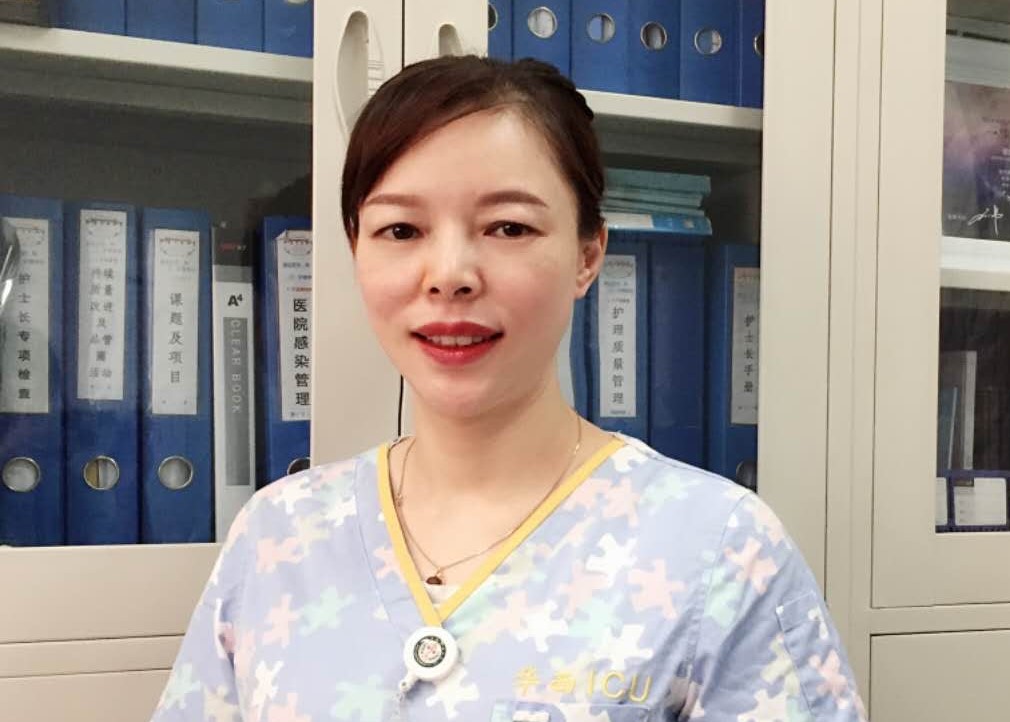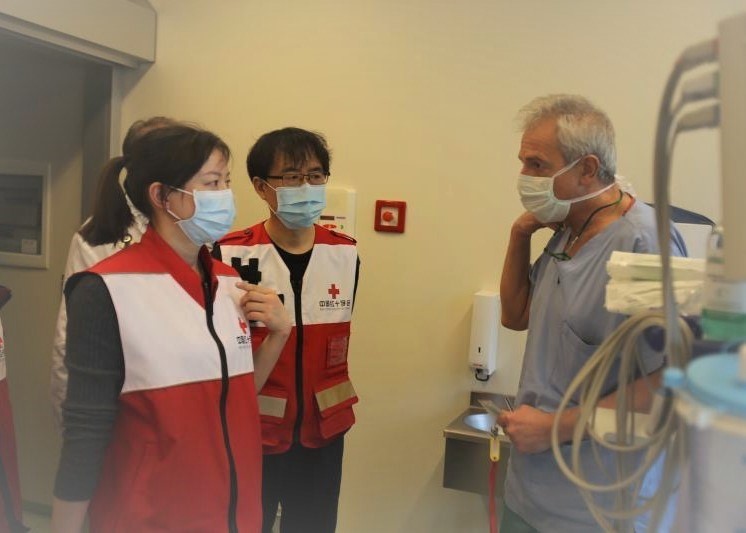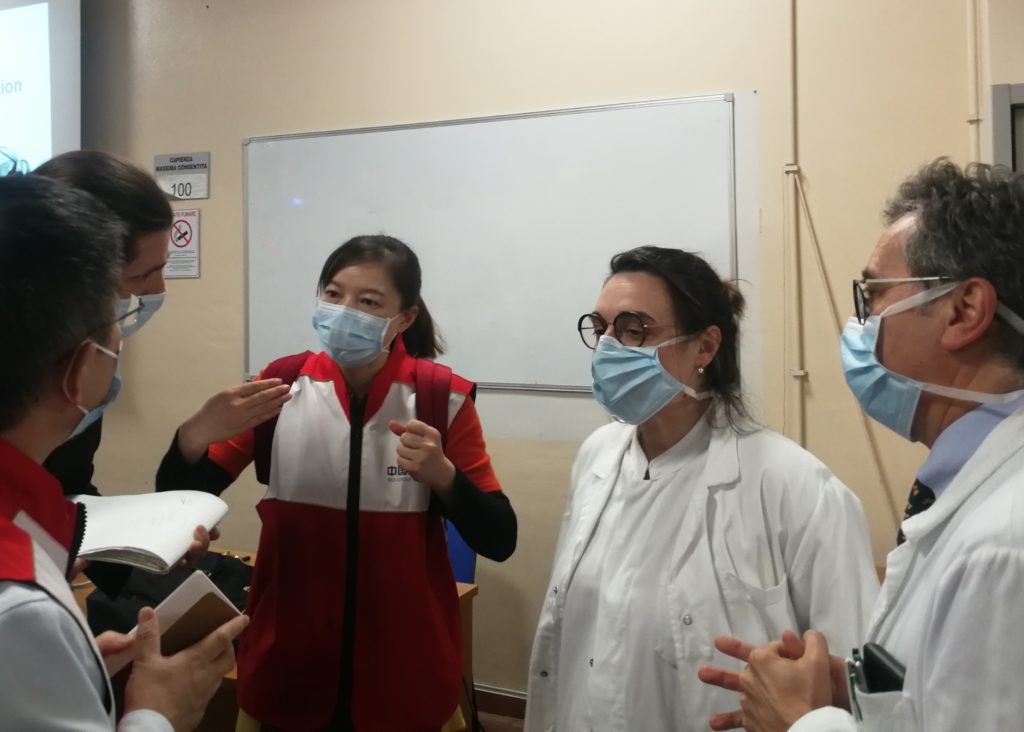Senior nurse Menglin Tang from our Center of Excellence West China Hospital in Chengdu went with her colleagues to Italy in March, to help contain the COVID-19 outbreak. The Chinese expert team was sent to the epicenter of the outbreak in Italy, the Lombardy province. For two weeks they introduced Italian medical teams to China’s practices of responding to this pandemic. Menglin shares her experience of working on the front lines, and how her work in Italy helped to change attitudes toward personal protection.

What impressions did you first have when you arrived to support the hospital in Italy? And how did your impressions change over time?
When we arrived, the hospitals gave me the strong impression that in Italy they have time-honored history and traditions. So it was a great pity for me not to have a chance to have a tour and appreciate the great cities of Italy.
We found the situation in the region of Lombardy even more worrying than in Wuhan, the epicenter of COVID-19 in China. During our visits and discussions with medical staff and the locals, we found that they were not keenly aware of the danger of the virus. Although there were fewer people on the streets, more work needed to be done to cut off the source and route for transmission. Italy had taken a different way to control the source of infection than we did in China.
During our short 2-week stay in Italy, we were pleased to see positive changes in public health policies. The Italian government started implementing effective measures such as lockdown, restrictions on outdoor activities and standard protection procedures of medical staff.
Despite the fluctuating numbers of confirmed cases on a daily basis, the numbers showed an overall downward trend.

Describe a typical day at the hospital in Italy. Were there enough medical personnel and supplies?
Hospital staff members were of course heavily occupied with work but in a well-organized and orderly way. However, insufficient protection of the medical staff and lack of PPE (personal protective equipment) seriously drew my attention. For example, the reason why some people didn’t wear enough PPE was that they thought this was just a strange cold or flu. Later, we saw that they had changed their attitude and started to wear face masks and other protection.
What the Chinese expert team has done mostly was to observe and have discussions on certain cases. We were glad that we could influence local medical teams in a positive way. We introduced China’s practices and experiences of response to COVID-19, including quarantine measures, antiviral drugs and other specific treatment methods such as plasma therapy and the use of tocilizumab (a drug used to treat arthritis).
As far as we knew, they needed urgently personnel and PPE, as well as a back-up plan for COVID-19 response.

What’s the same and what’s different about the situation in hospitals in China and in Italy during COVID-19?
For COVID-19 patients, China adopted centralized quarantine, and all patients with confirmed cases are hospitalized. Different levels of hospitals are designated for patients depending on the severity of their disease. In Italy, however, the hospitals admit only critically ill patients. I think this is partly because of the different health care systems and also the different cultures in China and Italy.
What are the most difficult and rewarding parts of your job during this pandemic?
The most difficult part of my job is to influence and try to change medical professionals’ attitudes towards this virus and personal protection. For example, in the beginning, influencing them to wear masks in Italy.
The most difficult part of my job during the pandemic was when I made the call about who was to be dispatched to Wuhan to work on the front lines of COVID-19. Our understanding of the disease was insufficient at that time. I was worried about the danger it might bring to my colleagues. I thought about their families and children, and every possible scenario, during their stay in Wuhan. I needed to be certain that all my colleagues would come back safe and sound to their families. I was quite touched that all of them volunteered to work on the front line of clinic treatment.
The most rewarding part of my job is to see all my colleagues return with zero infections. They were heavily engaged in the clinical treatment of COVID-19, but there was not a single case of infection among them.
Andreas Tsakistos, Children’s HeartLink Country Director: “It’s wonderful to see our partner site staff members like Menglin volunteer to go abroad and help others in times of need. I’m not surprised by her decision to go to Italy to help on the front line. Menglin is an exceptional nurse and leader. She is an integral member of the pediatric cardiac team at West China Hospital and has contributed significantly to the growth and development of pediatric cardiac services there. We’re so proud of what she has done to help the people of Italy deal with the COVID-19 crisis.”
